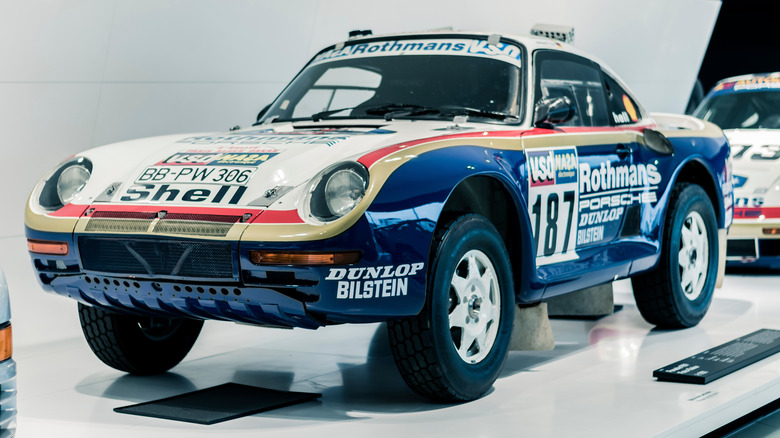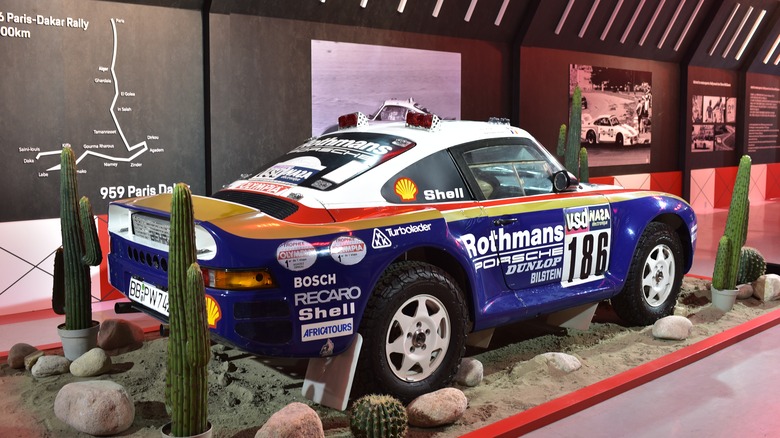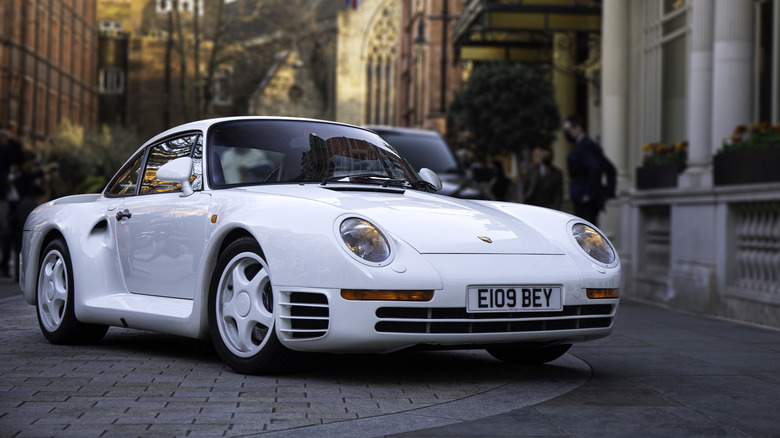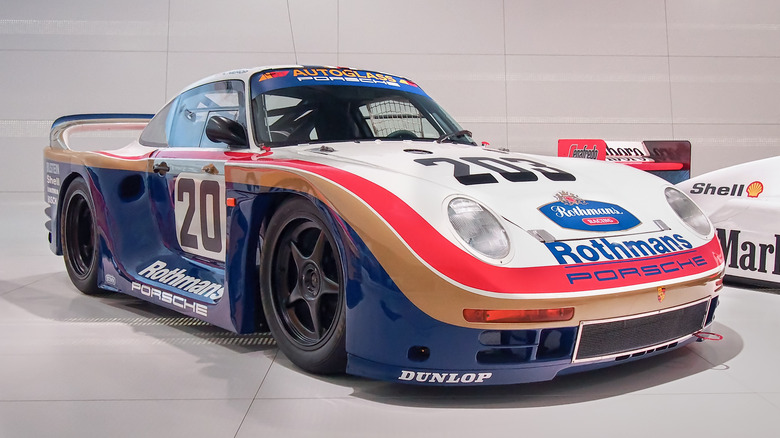How The Porsche 959 Rally Car Made Such An Impact On Racing
Porsche's racing story is right up there with the likes of Ferrari, Mercedes and McLaren. But, while the vast majority of the German company's success has been on the racetrack, Porsche also has a glittering (albeit short) career in rallying too.
The Porsche 911 proved itself as a successful rally car through the 1960s, highlighted by a double victory for a pair of 911 T race cars at the 1968 Monte Carlo Rally, and continued success over the following two years.
Two decades later, with both turbocharging and four-wheel-drive systems gaining in sophistication, Porsche set its sights on the World Rally Championship in the infamous Group B era. A period known equally for triumph and tragedy, Group B saw flame-spitting, all-wheel-drive racers like the Audi Quattro, Ford RS200, and Peugeot 215 T16 rocket through woodlands and over sand dunes at a pace never seen before.
Porsche signaled its intention to enter Group B with a 1983 concept car, called the Gruppe B, that later became known as the 959. This car featured all-wheel-drive, active suspension, and sophisticated electronics not featured on previous supercars. It was powered by a flat-six, 2.85-liter engine originally intended for Porsche's shelved 1980 Formula One effort. It featured sequential twin-turbocharging, where the second turbo didn't spin up until the engine hit 4,800 rpm, in a bid to reduce turbo lag.
Entering the Paris-Dakar Rally
The car was also fitted with an all-wheel-drive system with four driving modes that could vary how much power was distributed between the front and rear axles. As much as 80% could go rearwards when required. And there was even an automatic ride-height adjustment that lowered to improve high-speed aerodynamics.
The result, which arrived on dealership forecourts in 1986, was a bona fide supercar that could hit 62 mph (100 km/h) in 3.7 seconds and had a top speed of almost 200 mph. It wasn't street-legal in the U.S. at launch. The 959, which was priced at $225,000 and limited to a run of 292, is ranked among the best turbo cars ever made. It also featured hollow magnesium alloy wheels with built-in tire pressure monitors.
Despite producing a high-tech supercar to take on the Ferrari 288 GTO and ageing Lamborghini Countach, the real reason Porsche turned the Group B concept into the 959 was to homologate a version to go rallying. Before entering Group B, Porsche first decided to tackle the Paris-Dakar, a multi-week, off-road endurance race covering hundreds of miles per day, entered by cars, trucks and motorbikes, and today known as The Dakar Rally.
A one-two victory at the second attempt
The company had already tasted victory in the Paris-Dakar, winning the 1984 event with a modified 911, known as the 953. It was driven by René Metge and Dominique Lemoyne. With raised suspension and a new four-wheel-drive system, the car retained its 3.2-liter, normally aspirated engine, but with a reduced compression ratio.
Porsche then entered the 1985 Paris-Dakar with three of its new 959 rally cars, albeit without the twin-turbocharged engine and adjustable four-wheel-drive system that would go on to define the model. All three failed to finish.
Undeterred by the disappointing debut, Porsche entered again the following year, this time with a trio of 959s with the four-mode all-wheel-drive system and automatic ride height adjustment of the road car, plus the same twin-turbocharged engine, but reduced from 440 to 400 horsepower. This helped the motor run on the lower-quality, 86 octane gasoline available across the desert stages of the 9,000-mile route.
The modifications clearly worked, and a pair of Porsche 959s finished in first and second place, driven by the two-man teams of Metge and Lemoyne, plus six-time Le Mans winner Jacky Ickx and Claude Brasseur. A third 959, intended to operate as a support vehicle, finished in a respectable sixth place.
Why only seven racing 959s were built
But before Porsche could set its sights on the World Rally Championship, Group B was banned by the FIA at the end of the 1986 season, after two separate incidents caused the deaths of Lancia driver Henri Toivonen, his co-driver Sergio Cresto and three spectators. It was replaced by Group A, which went on to be dominated by cars like the Subaru Impreza and Mitsubishi Lancer Evo.
Porsche didn't take part, nor did it return to the Paris-Dakar. As a result, just seven racing examples of its 959 supercar were ever made — the two trios of Paris-Dakar entrants, plus one designed for track use and called the 961, pictured above.
Today, four of those cars are retained by Porsche, two were destroyed and one was sold by Porsche as a bare shell and rebuilt. One is privately owned — a 1985 example campaigned by Metge, sold at auction in 2018 for $5.9 million.



